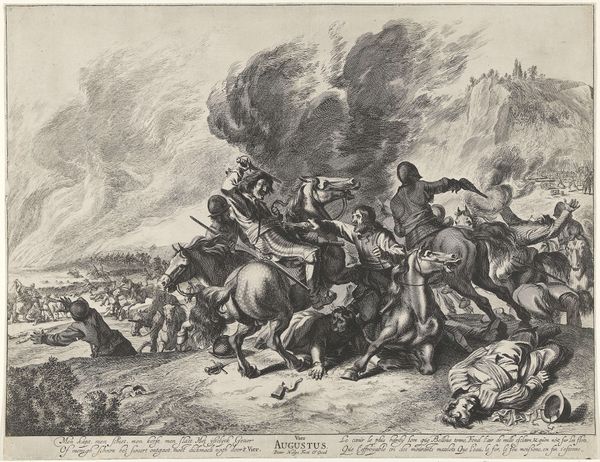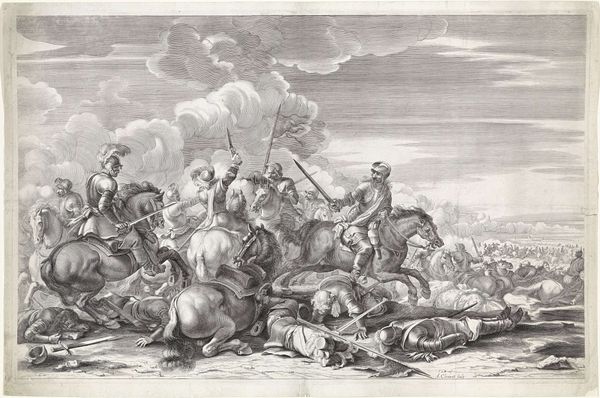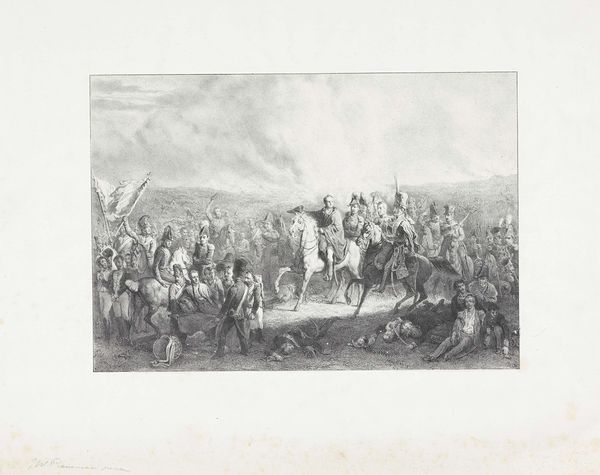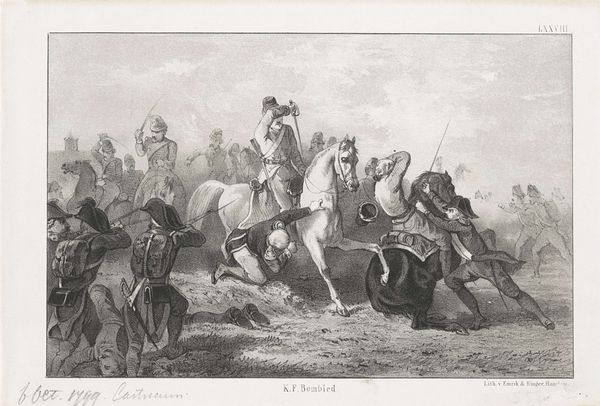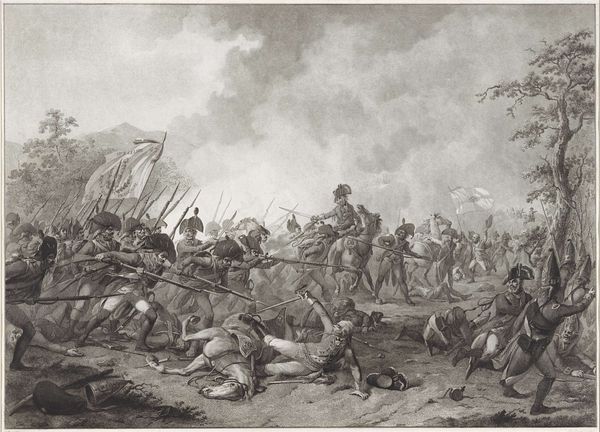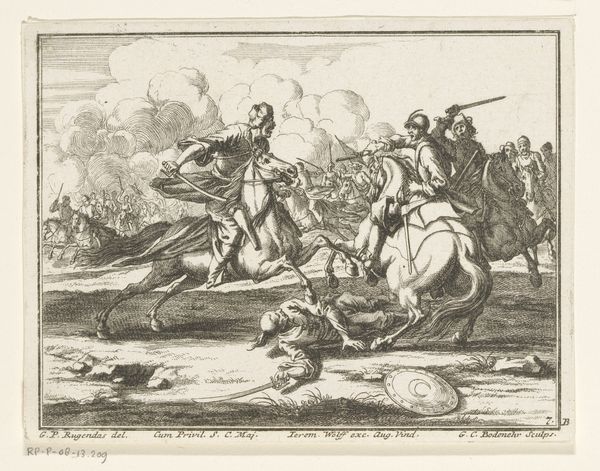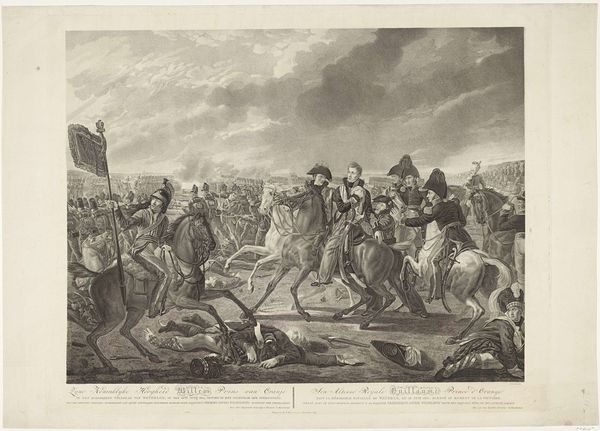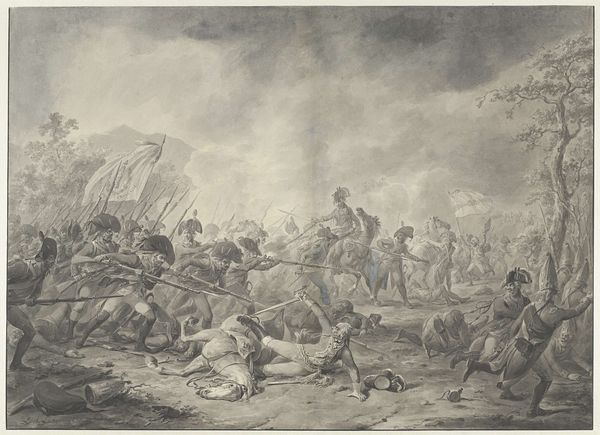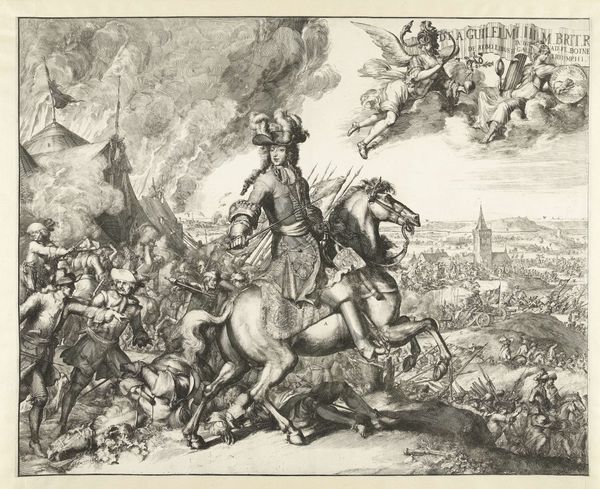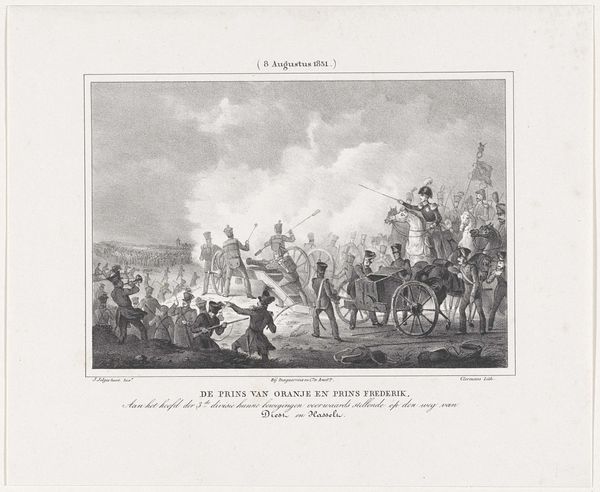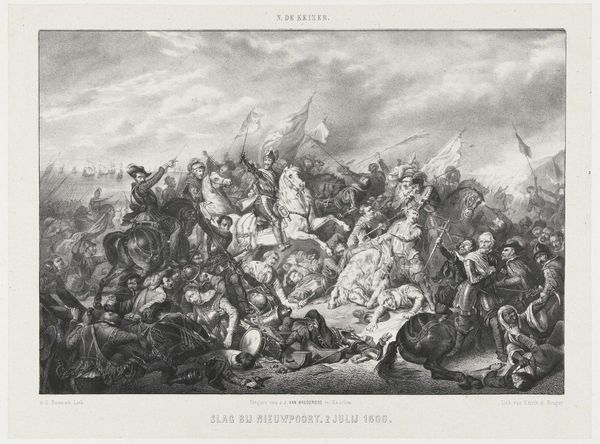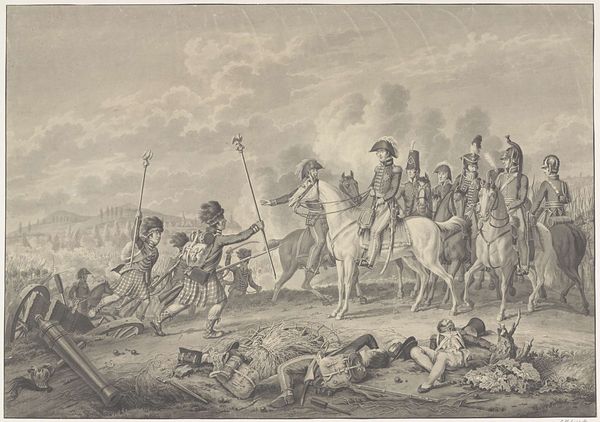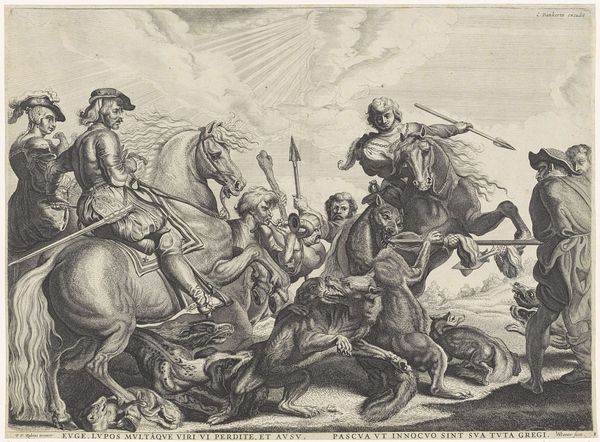
print, engraving
# print
#
landscape
#
romanticism
#
history-painting
#
engraving
Dimensions: height 508 mm, width 723 mm
Copyright: Rijks Museum: Open Domain
Editor: Standing before "Prins van Oranje in de slag bij Waterloo, 1815," an engraving created in 1816 by Haatje Pieters Oosterhuis, I’m struck by the chaos and violence rendered in such fine detail. It feels like a romanticized vision of war, but what elements are really at play here? What do you see in this piece? Curator: This engraving presents us with an opportunity to explore the relationship between war, material culture, and consumption. The very act of creating and distributing this print speaks to the industrialization of image production and the public’s appetite for consuming representations of national events. Consider the material: an engraving, easily reproducible, meant for mass circulation. It’s not about unique artistry here; it’s about spreading a message, fueling national sentiment. Editor: So, it's less about the artistic expression and more about how it functions as a consumable object, spreading a particular narrative? Curator: Precisely. How do you think the engraver's labour itself plays a role in the overall meaning of the work? The process, the repetitive and skilled work of the engraver, transforming this scene into a product, adds another layer to the reading. It makes one consider the commodification of war and history. The 'romance' you sensed isn't just artistic flair; it’s a carefully constructed commodity. Editor: It's interesting to think about the layers of production and consumption involved. It really challenges the idea of art as purely an aesthetic pursuit, revealing how intertwined it is with industry and society. Thank you! Curator: Indeed. Considering the means of production opens a deeper understanding of not only this image but its cultural role and impact.
Comments
No comments
Be the first to comment and join the conversation on the ultimate creative platform.
